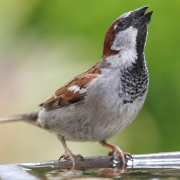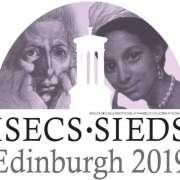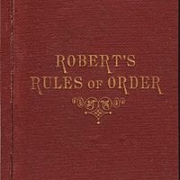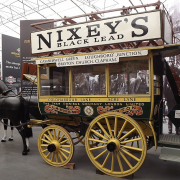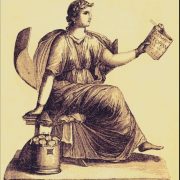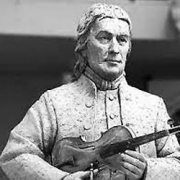MONTHLY BLOG 133, A YEAR OF GEORGIAN CELEBRATIONS – 1
If citing, please kindly acknowledge copyright © Penelope J. Corfield (2022)

To celebrate the imminent publication of my book on The Georgians 1, my next set of BLOGs commemorates significant Georgian milestone dates: one for every month of the year.2 No problem for January. It must be Burns Night: Tuesday January 25th.
The hero is Robert ‘Rabbie’ Burns, the evocative Scottish poet and song-writer (1759-96).3 He fully deserves celebration. Not least for writing the world’s most sung song, Auld Lang Syne, which hymns the poignancy of partings and of affectionate remembrance.4
Rituals at Burns Night suppers include the ceremonious arrival of a special dish of haggis. It contains meat offal (heart, liver, lungs), minced and cooked in a special bag with fillings of oatmeal, onions, suet, and seasoning.5 The degree of ceremony adopted remains a matter of choice. But the grandest ritual sees a Scottish piper in full regalia, playing in a procession, in which the dish of haggis is proudly paraded. It’s then eaten, washed down with Scottish whisky. (These days, too, vegetarian and non-alcoholic alternatives are available).
Annual meetings in Burns’ honour began among his friends, from 1801 onwards – only five years after his death. Other convivial groups began to do the same. Within ten years, a critic denounced the spread of the custom. In 1811, he detected a positive ‘Burnomania’.6 What term would he have to invent in 2022, when there are at least 200+ Burns Clubs globally? In 1885, these were organised into the Robert Burns World Federation (RBWF): its motto ‘Educate – Celebrate – Promote’.7
Clearly, the ‘mania’ has become settled and institutionalised. And it shows no sign of flagging. All the organised Societies host their own Burns Night suppers. But there are, in addition, many gatherings, which are spontaneous and ad hoc local initiatives. Thus the estimated figure of some 2,500 Burns suppers world-wide in January 2021 was probably too low. Meanwhile, an amiable venture from Glasgow University’s Centre for Burns Studies encourages revellers everywhere to share their memories, via an interactive Map.8
What is Burns’ special gift that generates such enthusiasm and loyalty? One component is undoubtedly Scottish national pride in his achievements. The strength of that cultural link should not be underestimated.9 And the Scottish diaspora over the centuries has taken Burns admirers world-wide. Yet it is completely wrong to assume that people from other nations don’t appreciate his work, even if they may need coaching in some of his less easily understood dialect usages. Indeed, the fact that many of his poems are known firstly as songs makes them easily memorable – the heartfelt musical meaning overriding any obscure terms.
Burns is thus a poet and song-writer for all times and peoples. His special gift consists in conveying richly complex thoughts in language of piercing clarity. He is simple but not trite. Loving but not soppy. When he is wryly melancholic, he is not bitter.
Who can resist raising a glass each year to the author of sentiments like ‘My love is like a red, red rose’; ‘A man’s a man, for a’ that!’ ‘O would some power the giftie gie us,/ To see ourselves as others see us’; ‘Man’s inhumanity to man/ Makes countless thousands mourn!’; and yet ‘We’ll drink a cup of kindness yet/ For the sake of Auld Lang Syne’.
All that, and the tribute taps into a tradition that now dates over 200 years. Burns was a Georgian radical who thought that people should be judged on their merits, not by their birth or titles. And his own merit is as radiant today as ever.
ENDNOTES:
1 P.J. Corfield. The Georgians: The Deeds and Misdeeds of Eighteenth-Century Britain (Yale UP., London, 2022), pp. 470: publication date 22 January 2022.
2 Ibid., pp. 389-91.
3 The first biography was published soon after his death by R.H. Heron, A Memoir of the Life of the Late Robert Burns (Edinburgh, 1797); a relatively recent one is by R. Crawford, The Bard: Robert Burns, a Biography (2011).
4 [M.J. Grant], Auld Lang Syne: A Song and its Culture (Cambridge, Open Book publication, 2021).
5 Affectionate references to this quintessentially Scottish dish go back to Burns’ poetic address To a Haggis (1786), in T. Burke (ed.), The Collected Poems of Robert Burns (Ware, Herts, 2008), pp. 133-4, setting a trend for familiar commemorations, with successors like W. Foolie, The Scots Haggis [in verse] (Edinburgh, 1821); and D. Webster, The Scotch Haggis: Consisting of Anecdotes and Jests, Curious and Rare Articles of Literature … (Edinburgh, 1822).
6 W. Peebles, Burnomania: The Celebrity of Robert Burns Considered … (Edinburgh, 1811).
7 Consult website http://www.rbwf.org.uk (accessed 10 Jan. 2022).
8 Report in https://www.gla.ac.uk/news/archiveofnews/2021/january/headline_769448_en.html (accessed 1o January 2022). The map will eventually be featured on https://www.scotland.org/burns.
9 C.A. Whatley, Immortal Memory: Burns and the Scottish People (Edinburgh, 2016); C.E. Andrews, The Genius of Scotland: The Cultural Production of Robert Burns, 1785-1734 (Leiden, 2015).
For further discussion, see Twitter
To read other discussion-points, please click here
To download Monthly Blog 133 please click here

